
No two towns are alike in Minnesota. Our communities thrive on their individuality and the unique offerings they bring to the table ranging from arts to the outdoors and everything in between. In spite of their distinctiveness, more and more Minnesota cities are coming together on the most pressing issue of our time: climate. Over the past few years, many Minnesotans have experienced first-hand the climate emergency through extreme weather events like flooding and heat and are pushing their towns and cities to take action.
This year, an unprecedented 16 cities have stepped up to declare climate emergencies, and these cities, and many more in all corners of the state, are implementing policies and programs to take on climate change. In this blog post, we shine the spotlight on some of the work being done in St. Cloud, St. Louis Park, and Rochester.
Solar and energy efficiency in St. Cloud
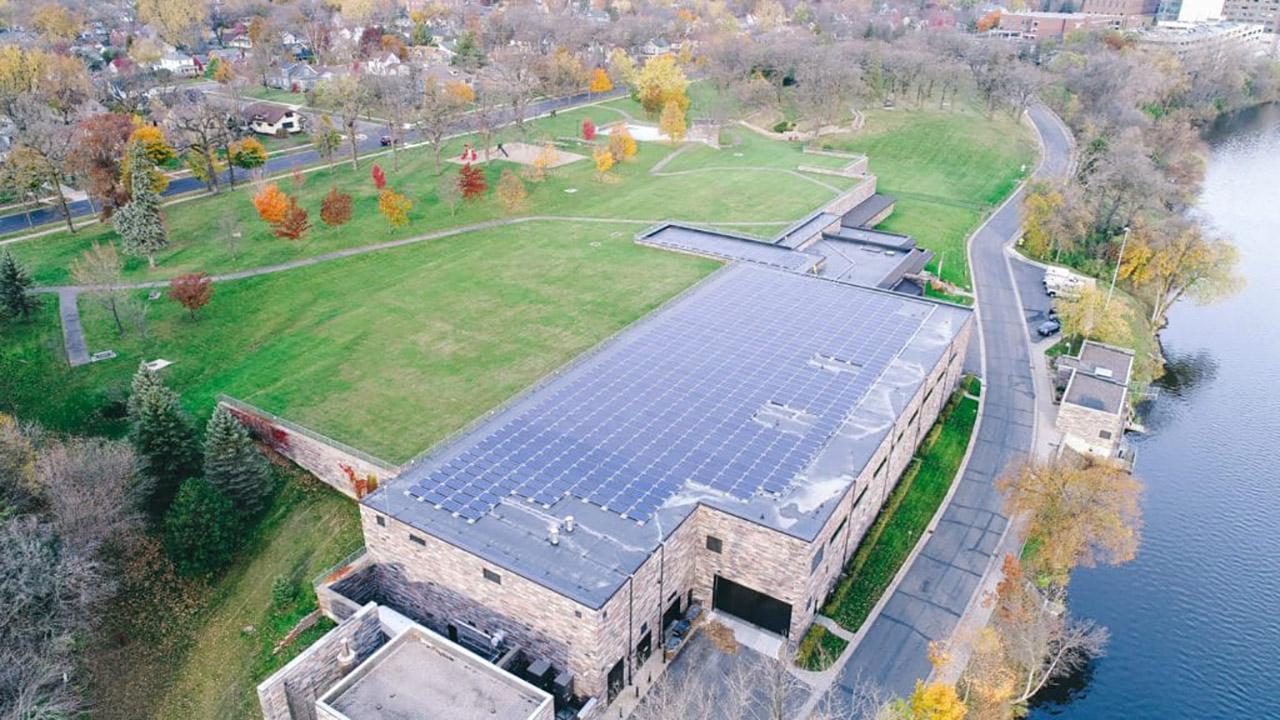
The city of St. Cloud, located on the banks of the Mississippi River, is home to about 68,000 residents, and the area hosts six universities. Utilizing thorough research, partnerships with universities in Minnesota and Germany, and working with private businesses, the city is finding innovative ways to save taxpayers money while reducing energy usage and greenhouse gas emissions. St. Cloud seeks out the nexus between creative solutions, partnerships, and thorough data analysis to ensure their investments have long-term viability.
According to Tracy Hodel, Public Utilities Director and a St. Cloud employee of 20 years, one of the first triggers that pushed the city to focus on energy efficiency was the opportunity to invest in community solar gardens (CSG) after Minnesota’s CSG law passed in 2013. Looking into CSG credits prompted the city to examine their total electricity usage for the first time; the results were surprising—and much higher than they had predicted. The City of Saint Cloud’s 453 electricity meters city-wide, serving buildings like City Hall, fire and police departments, an ice arena, and more—were consuming about 30 million kilowatt-hours (kWh) per year.
The city installed 14 solar arrays—both ground-mounted and rooftop—in 2016, providing over 2 million kWh of energy. About five years later, those installations are nearly paid off, and, going forward, ongoing costs will only be for operations and maintenance—a boon to the mid-sized city’s annual budget.
So many cities think green is so expensive, but it’s the opposite. Our studies have shown greener is cheaper.
Tracy Hodel, St. Cloud Public Utilities Director
A needed update to the city’s wastewater treatment facility also sparked a focus on energy efficiency. Wastewater treatment is an energy-intensive process and accounted for about 40 percent of the city’s total electricity usage for operations. The expansion increased that energy draw and prompted St. Cloud to seek out more opportunities for efficiency to help bring down costs. Working with an intern through the University of Minnesota’s Technical Assistance Program (known as MnTAP), St. Cloud was able to reduce electricity consumption by 1.6 million kWh. (In 2020, the average American household used about 10,700 kWh per year, making St. Cloud’s efficiency reductions equivalent to nearly 150 homes’ worth annual electricity consumption.)
St. Cloud’s wastewater treatment facility continues to serve as a locus of innovation and cost savings. Methane that was once flared is now being used to generate energy, and the city is able to own those Renewable Energy Credits (also known as RECs). REC’s represent clean energy generation; for entities wanting to decarbonize their electricity generation, but are not able to do so through the electricity that is available to them, purchasing REC’s serves as a way to offset their greenhouse gas emissions. In turn, selling REC’s provides a financial boost for St. Cloud operations. And they are working with the University of Münster in Germany to look into producing renewable hydrogen fuel on-site, which could lead to energy cost savings at the facility as great as 80 percent.
Youth leadership and carbon neutrality goals in St. Louis Park
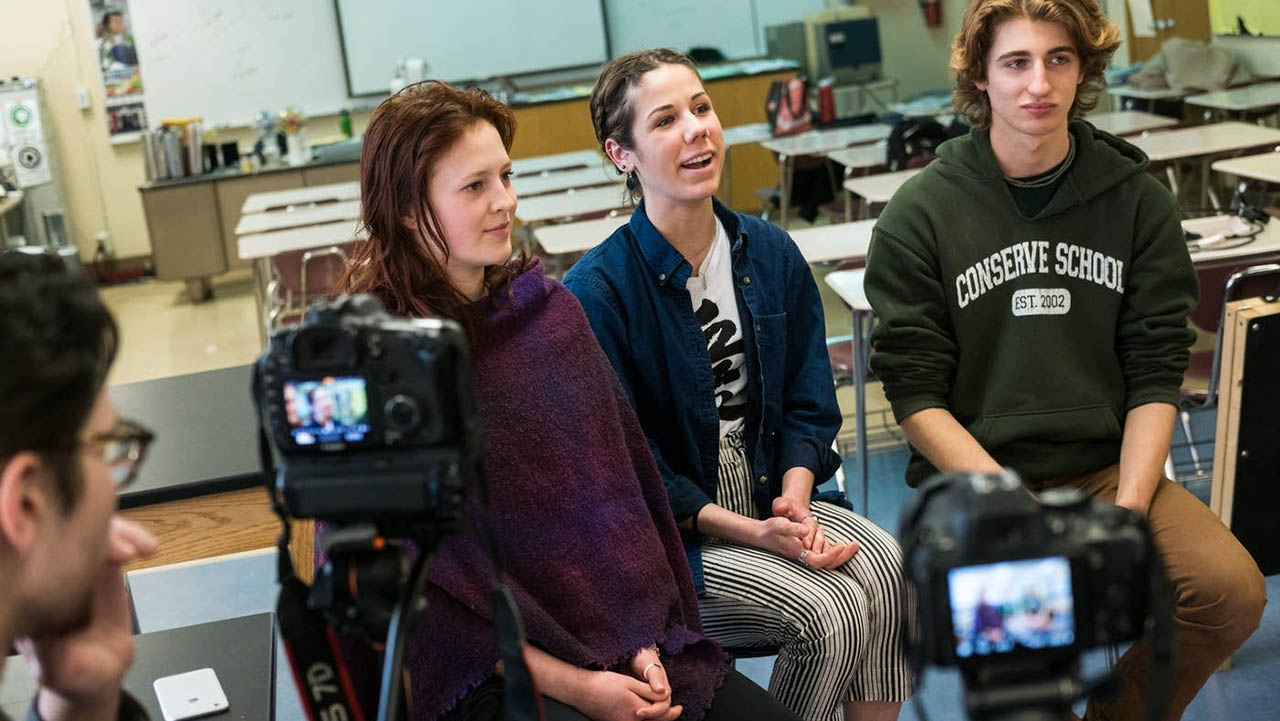
The City of St. Louis Park, a first-ring suburb directly west of Minneapolis with a population of about 49,000 has a robust approach to sustainability. And the youth of St. Louis Park have played a pivotal role in the city’s climate efforts; the full story can be heard as told by current St. Louis Park City Council Member Larry Kraft in two episodes of the City Climate Corner podcast. In 2015, youth activists served the City Council a report card on their sustainability efforts. The B- grade—with failing marks for the city’s climate efforts—along with the activists’ collective argument that the city had a duty to take action to protect their future, prompted the City Council to spring into action. This ultimately led to the adoption of the state’s most ambitious Climate Action Plan in 2018, and St. Louis Park youth had a formal seat at the table in its development.
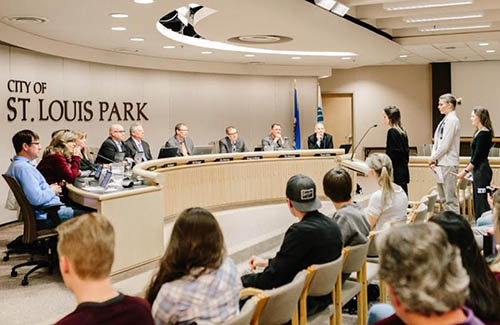
St. Louis Park’s Climate Action Plan not only has the ambitious and critical goal of achieving carbon neutrality by 2040, but the plan also sets several interim targets for 2030, to help ensure the city is on track. If achieved, these seven midterm targets will cumulatively result in a 55 percent greenhouse gas emissions reduction by 2030.
Since 2018, St. Louis Park has been recognized by SolSmart, an organization that recognizes cities, counties, and regional organizations for addressing barriers to solar and fostering growth in solar markets. Through initiatives that have reduced red tape, increased access to information, and improved technical capacity of city inspectors, St. Louis Park has made progress towards its goal of achieving 100 percent renewable electricity by 2030, with at least 10 percent of that coming from on-site solar generation.
St. Louis Park also has a Green Building Policy for Planned Unit Developments and projects that receive a certain level of financial assistance from the city; the policy helps ensure buildings—which are designed to last for decades, and well beyond the dates by which our society needs to achieve net carbon neutrality—incorporate basic principles of energy and water efficiency. They have also played an active collaborative role in the Better Buildings Coalition, working to advance more climate-friendly commercial building energy codes.
Other initiatives include St. Louis Park’s participation in the Partners in Energy collaboration with Xcel Energy, Cities Charging Ahead, and Greenstep Cities (having achieved a level five distinction).
Jobs, justice, and long-term planning in Rochester
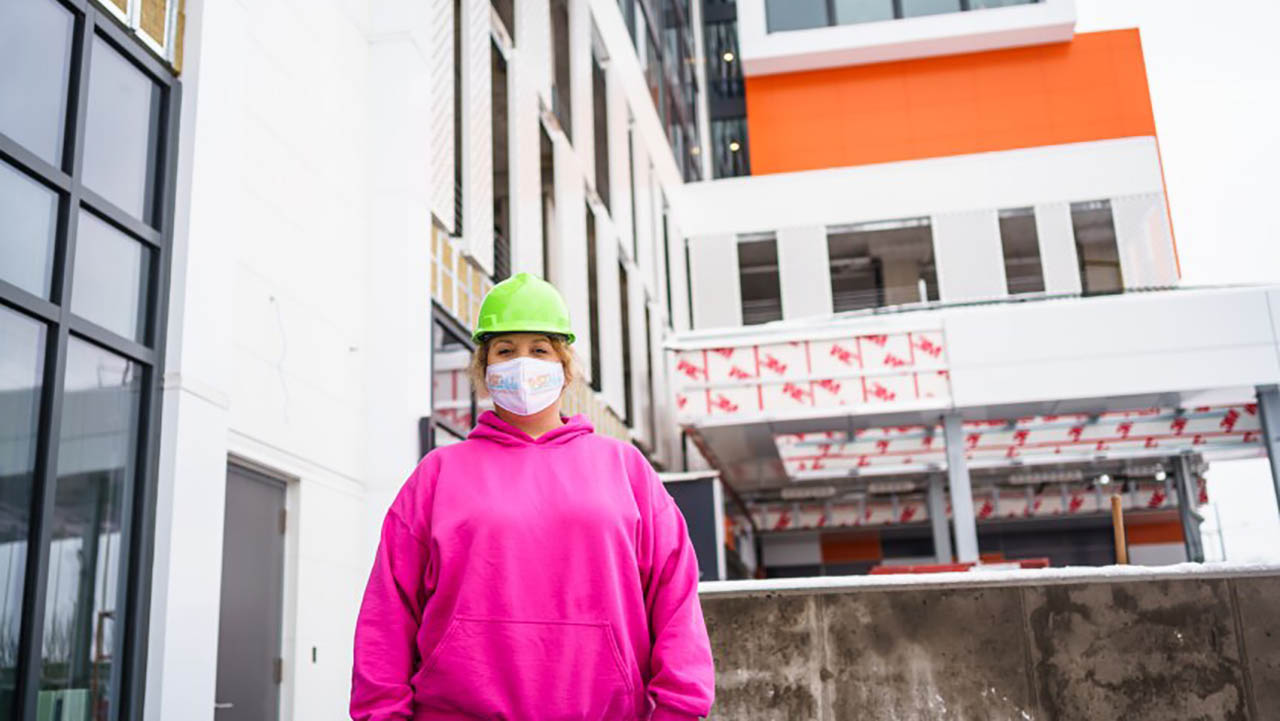
As of January 18, 2022, Rochester can count itself among 15 cities worldwide to be selected for a competitive innovation competition that will support cities’ transformative ideas. The Bloomberg 2021 Global Mayors Challenge will reward the City of Rochester $1 million to support its vision to address multi-generational disparities among women of color. With $5.6 billion in guaranteed investment in Rochester—creating between two and three thousand good-paying, construction-related jobs annually—the city sought funding to figure out how to make sure women who are Black, Indigenous, and people of color are actively included in this job creation. The funding will provide technical assistance for achieving these outcomes and will also provide financial compensation to women of color who best understand the barriers to these jobs.
The federal government’s recovery and infrastructure spending bills are creating large, new construction-based funding sources throughout the country. The carbon-free energy transition serves as an opportunity to address and improve on existing systemic inequities rooted in racial, gender, and class disparities—but this requires intentionality and engagement. This opportunity for Rochester may very well be instructive for how communities throughout Minnesota may create better outcomes, creating mutually beneficial opportunities for job seekers, job creators, and the cities where they reside. Results of this funding opportunity are certainly something to keep an eye on going forward.
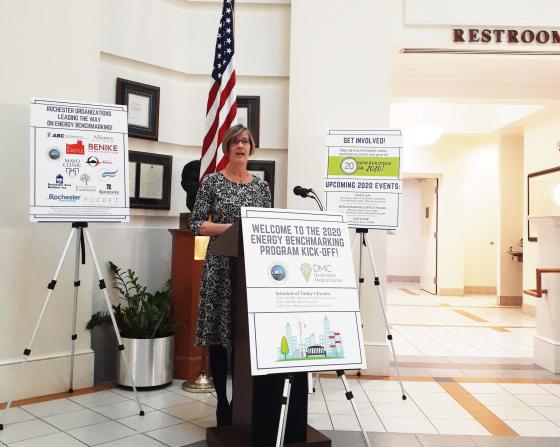
This initiative is one part of a larger sustainability effort in Rochester. Transportation planning, energy initiatives such as building benchmarking and supporting Benchmarking Energy Efficiency Program Grants make up parts of the robust landscape of sustainability efforts that Rochester is pursuing. While tools like the Community Development Sustainability Asset Map provide valuable information to residents and visitors. The interactive map shows electric vehicle charging stations, parks with details about available amenities, bike paths, bike shops, and waste and recycling facilities.
Climate mitigation and adaptation initiatives are happening throughout Minnesota. These efforts will help make our cities more livable, viable, and healthier in both the short and long-term.
Other noteworthy and recent news about Minnesota cities:
- Minneapolis and Saint Paul rank 4 and 20, respectively in ACEEE Climate Cities Report Card
- Northfield passed a sustainable buildings policy
